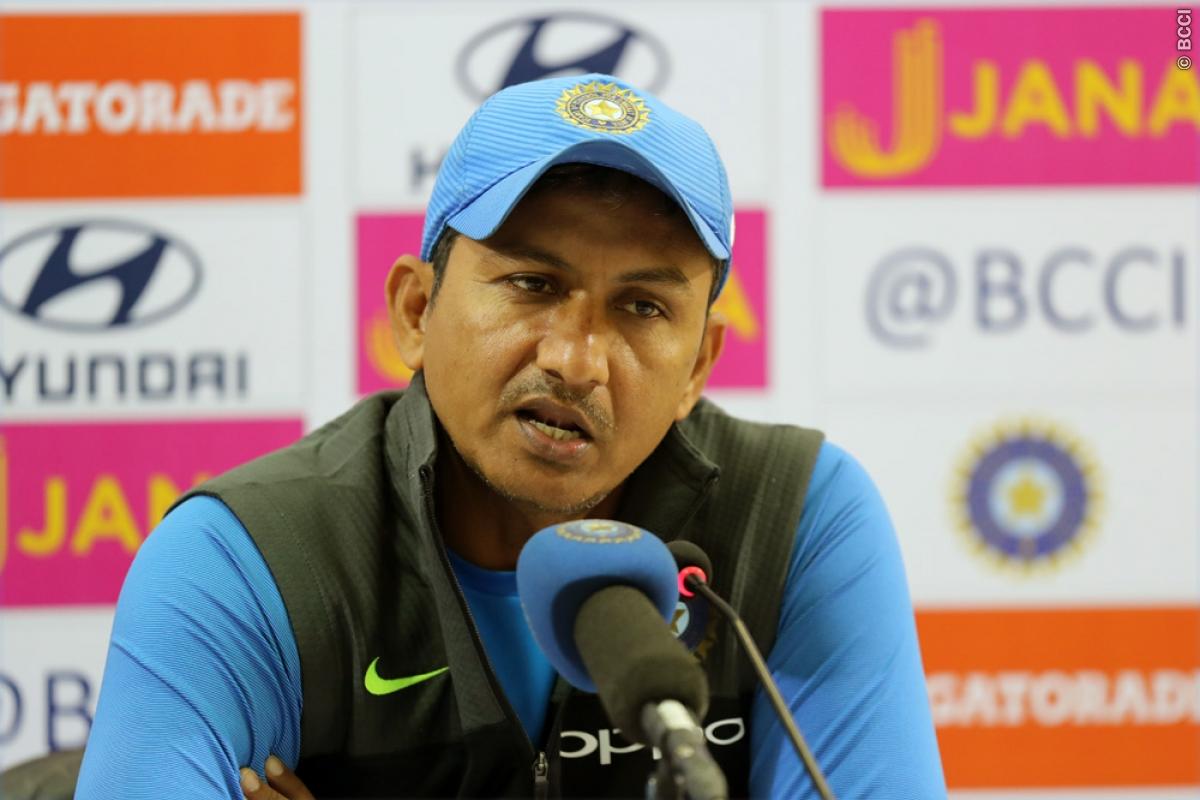Ravi Shastri has taken the fear of failure out of every player, says Sanjay Bangar

BCCI
Sanjay Bangar has praised Ravi Shastri’s contribution to Indian cricket claiming that the coach has taken the fear of failure out of the players. The batting coach also revealed that a lot of work goes on behind the scenes by the managemnet that has seen India succeed in the overseas soil of late.
When Shastri took over the reins as Team India’s head coach after Anil Kumble’s resignation in mid-2017, he brought in Bharat Arun as the side’s new bowling coach and Sanjay Bangar as the batting coach. Bangar, however, has been associated with the Indian team from before that when Shastri was the team director from August 2014 to July 2016 and continued to stay under Kumble’s expertise later on.
The 45-year-old, who has been a significant part of the India side that has been dominating world cricket for the past two years, claimed that it was Shastri who worked on players’ mindset and encouraged them to take challenges.
“It began under Ravi’s leadership. His influence on the batsmen’s mindsets has been very good. He has taken the fear of failure out of everybody. Players are willing to take risks, to come out of their comfort zone. Players are also taking responsibility, which is a great thing for a team which wants to leave a legacy behind.
Our first aim, when we began in August 2014, was to restore the belief of the players in their ability and have a very relaxed, friendly atmosphere in the dressing room, and then work towards building a strong bond between us (support staff) and the players,” Bangar told The Hindu.
In 2017, Team India
Under the captaincy of Kohli, India have also equalled the record for the most number of consecutive wins in ODIs. The streak that started during the tour of West Indies, extended further in five-match ODI series in Sri Lanka and three ODI wins against Australia before New Zealand brought an end to it. The record of nine straight ODI wins was previously set by MS Dhoni’s captaincy from November 2008 to February 2009.
“In world cricket, most teams’ home records are better than their overseas records. The following Indian cricket has is enormous and so are the expectations. Every follower has an opinion. Our job is to respect those opinions and work towards achieving our own and the fans’ expectations. Average teams are known for their occasional successes and great teams are known
Indian team knows their weak points and with the help of the coaches, has worked on those areas before the start of the much-anticipated series against South Africa next year. During the Test series against Sri Lanka, the Indian skipper had even demanded a fast pitch due to lack of preparation time ahead of the SA tour.
At Eden Gardens, the curators tried to fulfil the demand where the pitch offered bounce and swing. The management had even decided to send some domestic cricket’s young pacers for the training session for more productive outputs.
“We take pride in our preparation — we create situations we are likely to face, with an attention to detail, and then practice these situations for hours, whether it is against the bouncing ball or the seaming ball. This has helped us cope. If you recall, this was the first touring team [in Australia] to score over 400 in the first innings of all the four Tests, in 2014. We have overcome the bouncing-ball challenge, and we move around the crease better to upset the bowlers’ length. We also use huge amounts of data to assess the strengths and weaknesses of the opposition, especially the bowlers, the lengths they bowl. There is a lot of work that goes on behind the scenes. What you see on the field is a result of all the hard work in their preparation and their hunger to succeed and the planning and the direction that the team management provides,” Bangar added.
